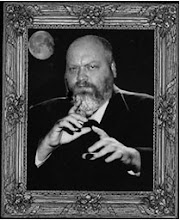Gothic Romance
goth·ic - Pronunciation: 'gä-thik
Date: 1591: (often not capitalized) of or relating to a style of fiction characterized by the use of desolate or remote settings and macabre, mysterious, or violent incidents
ro·mance - Pronunciation: rO-'man(t)s
Date: 14th century(1) : a medieval tale based on legend, chivalric love and adventure, or the supernatural (2) : a prose narrative treating imaginary characters involved in events remote in time or place and usually heroic, adventurous, or mysterious (3) : a love story b : a class of such literature
When cornered and asked to describe the type of literature I write, feeling the term “horror” to be far too broad, I proclaim proudly “Gothic Romance with testosterone”. This is usually followed with a scoffing noise or some other off-putting remark from the questioner.
I’ve never understood the disdain most people feel for the Gothic Romance sub-genre. It has been the redheaded stepchild of horror since before I was born. Truth be told, some of the greatest horror novels I’ve ever read fall under the Gothic Romance umbrella… The Haunting of Hill House by Shirley Jackson is a prime example. The Gothic Romance flourished in the late 18th and early 19th century in Great Britain. Focusing on mysteries that often involved the supernatural, the Gothic Romance was heavily tinged with horror, and they were usually set against dark backgrounds of medieval ruins and haunted castles.
The Castle of Otranto by Horace Walpole was the forerunner of the type, which included the works of Ann Radcliffe, Matthew Gregory Lewis, and Charles R. Maturin, not to mention the novel Frankenstein by Mary Shelley. These works usually concerned themselves with spirited young women, either governesses or new brides, who go to live in large gloomy mansions populated by peculiar servants and precocious children and presided over by darkly handsome men with mysterious pasts, but look to Bram Stoker’s Dracula and its decidedly gothic overtones on how the themes could be explored with even more vigor… Dan Curtis explored the genre in the late-sixties and seventies, and was quite successful with it, in television. Dark Shadows and his masterful retelling of Dracula, with the spectacular Jack Palance as the cursed Prince Vlad, were cornerstones of what Gothic Romance could be.
So if you happen to ask me what type of literature I write, do not sneer when I tell you the truth… a wealth of beautiful prose and horrifying verse have been penned within this proud genre, and I intend on doing my part to restore its good name among horror aficionados.
~Bob Freeman
Date: 1591: (often not capitalized) of or relating to a style of fiction characterized by the use of desolate or remote settings and macabre, mysterious, or violent incidents
ro·mance - Pronunciation: rO-'man(t)s
Date: 14th century(1) : a medieval tale based on legend, chivalric love and adventure, or the supernatural (2) : a prose narrative treating imaginary characters involved in events remote in time or place and usually heroic, adventurous, or mysterious (3) : a love story b : a class of such literature
When cornered and asked to describe the type of literature I write, feeling the term “horror” to be far too broad, I proclaim proudly “Gothic Romance with testosterone”. This is usually followed with a scoffing noise or some other off-putting remark from the questioner.
I’ve never understood the disdain most people feel for the Gothic Romance sub-genre. It has been the redheaded stepchild of horror since before I was born. Truth be told, some of the greatest horror novels I’ve ever read fall under the Gothic Romance umbrella… The Haunting of Hill House by Shirley Jackson is a prime example. The Gothic Romance flourished in the late 18th and early 19th century in Great Britain. Focusing on mysteries that often involved the supernatural, the Gothic Romance was heavily tinged with horror, and they were usually set against dark backgrounds of medieval ruins and haunted castles.
The Castle of Otranto by Horace Walpole was the forerunner of the type, which included the works of Ann Radcliffe, Matthew Gregory Lewis, and Charles R. Maturin, not to mention the novel Frankenstein by Mary Shelley. These works usually concerned themselves with spirited young women, either governesses or new brides, who go to live in large gloomy mansions populated by peculiar servants and precocious children and presided over by darkly handsome men with mysterious pasts, but look to Bram Stoker’s Dracula and its decidedly gothic overtones on how the themes could be explored with even more vigor… Dan Curtis explored the genre in the late-sixties and seventies, and was quite successful with it, in television. Dark Shadows and his masterful retelling of Dracula, with the spectacular Jack Palance as the cursed Prince Vlad, were cornerstones of what Gothic Romance could be.
So if you happen to ask me what type of literature I write, do not sneer when I tell you the truth… a wealth of beautiful prose and horrifying verse have been penned within this proud genre, and I intend on doing my part to restore its good name among horror aficionados.
~Bob Freeman


3 Comments:
I've been in love with Gothics since elementary school. I just received a great review for my first one - Trimagon Hall. Somebody said to me, "Thanks for bringing back Gothics." I don't want to bring them back! I want them to always be here!
It may be maligned by the literati, but the gothic novel for me encompasses all that makes a story grand... it has power, mystery, and, dare I say, the Hammer of the Gods... Rich characters and loads of atmosphere make for a dish too delicious to stay away from. I'll be checking out your novella...congratulations on a terrific review.
Oh, and thanks for coming by.
You're welcome and I enjoy your site very much!
Post a Comment
<< Home